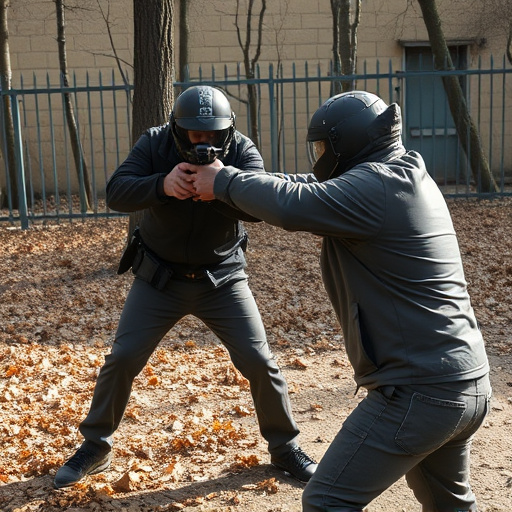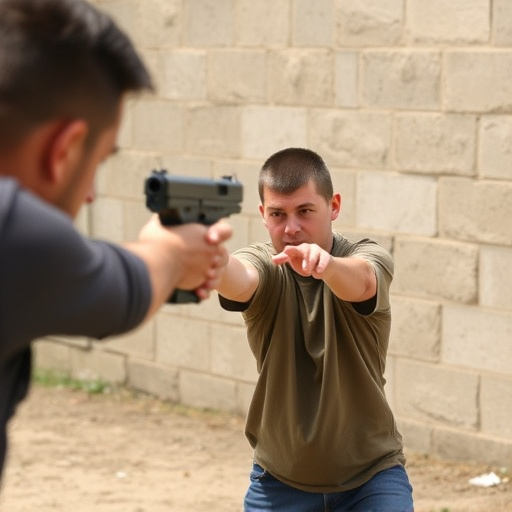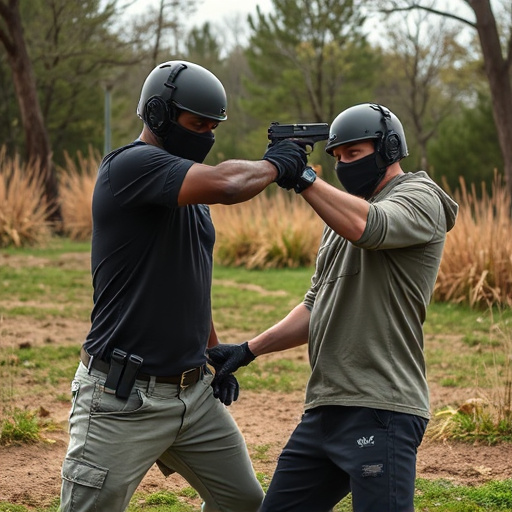Obtaining non-lethal weapon training certification includes learning proper stun gun maintenance, focusing on battery care. This involves regular cleaning, avoiding corrosion, correct charging, and storage per manufacturer guidelines. Best practices include keeping batteries cool, dry, inspecting for damage, minimizing use, cycling fully, and testing voltage to ensure reliability in emergencies.
“Explore the world of non-lethal weapon training certification, a crucial step for individuals seeking to enhance their personal safety. This comprehensive guide delves into the essential aspects of preparing for and maintaining your stun gun battery. From understanding certification requirements to mastering care techniques, you’ll discover strategies to ensure optimal battery life. Learn from common mistakes and gain expert insights on prolonging your stun gun’s effectiveness. Stay prepared, stay safe—dive into this essential resource for all things stun gun-related.”
- Understanding Non-Lethal Weapon Training Certification Requirements
- Essential Components of Stun Gun Battery Care and Maintenance
- Strategies for Prolonging Stun Gun Battery Life
- Common Mistakes to Avoid During Stun Gun Battery Maintenance
Understanding Non-Lethal Weapon Training Certification Requirements

Obtaining a non-lethal weapon training certification is a crucial step for individuals looking to carry and use stun guns or other electroshock weapons responsibly. The process typically involves understanding and meeting specific training and safety requirements set by local, state, or national regulatory bodies. These standards ensure that users are equipped with the necessary knowledge and skills to handle these devices effectively while minimizing risks.
One key aspect of non-lethal weapon training is learning how to maintain stun gun battery life, as it directly impacts the device’s performance during an emergency situation. Training programs often cover proper charging techniques, storage guidelines, and usage patterns that help prolong battery lifespan. Understanding these practices empowers individuals to ensure their stun guns remain operational when needed most, contributing to personal safety and public security.
Essential Components of Stun Gun Battery Care and Maintenance

Proper care and maintenance of a stun gun’s battery are paramount to ensure its reliability and longevity. Regular cleaning and inspection of the battery terminals for corrosion or damage is crucial, as even minute buildup can impair power delivery. Using only recommended cleaning solutions and soft brushes will prevent damaging delicate components.
In addition to routine upkeep, understanding how to optimally charge and store your stun gun’s batteries is vital. Follow manufacturer guidelines strictly for charging times and voltages, avoiding overcharging which can lead to battery degradation. Store batteries in a cool, dry place away from direct sunlight or extreme temperatures to maximize their lifespan.
Strategies for Prolonging Stun Gun Battery Life

Stun guns, while powerful tools for self-defense, rely on batteries that can deplete quickly during use. To maximize the lifespan of your stun gun battery, several strategies can be employed. First, avoid extreme temperature changes as they can strain the battery. Keep your stun gun in a cool, dry place, away from direct sunlight and heat sources. Regularly inspect the device for any signs of damage or corrosion, addressing these issues promptly to prevent premature battery failure.
Additionally, practice responsible usage by ensuring you only activate the stun gun when absolutely necessary. Partial discharges can drain the battery faster, so use it sparingly. Keep the stun gun charged at all times using a dedicated charger, and consider purchasing an extra battery for convenience. Regularly cycling the battery by fully discharging and then recharging it can also extend its overall life, mimicking the behavior of many modern electronic devices.
Common Mistakes to Avoid During Stun Gun Battery Maintenance

Maintaining a stun gun battery is crucial for ensuring its longevity and reliability when it matters most. A common mistake is neglecting regular cleaning and inspection, which can lead to corrosion buildup on terminals and contacts. This not only hampers charging but also reduces the overall performance of the device. Always use a soft cloth or brush to gently wipe down the battery, removing any visible debris or grime.
Another error to avoid is overcharging the battery beyond its specified limits. While it might seem like a quick fix for low power, doing so can damage the internal chemistry and significantly shorten the battery life. Stick to the manufacturer’s recommended charging times and avoid leaving it plugged in constantly. Regularly test the battery’s voltage with a multimeter to ensure it remains within the optimal range for efficient performance and extended lifespan.
Obtaining a non-lethal weapon training certification equips individuals with valuable skills for self-defense, but proper care of equipment is paramount. Understanding the essential components of stun gun battery maintenance and strategies to prolong its lifespan are crucial. By avoiding common mistakes and adhering to best practices, such as regular cleaning, keeping it charged, and storing it safely, users can ensure their stun guns remain reliable when needed most. Remember, proper training and maintenance go hand in hand to make your stun gun a valuable tool for personal safety.
